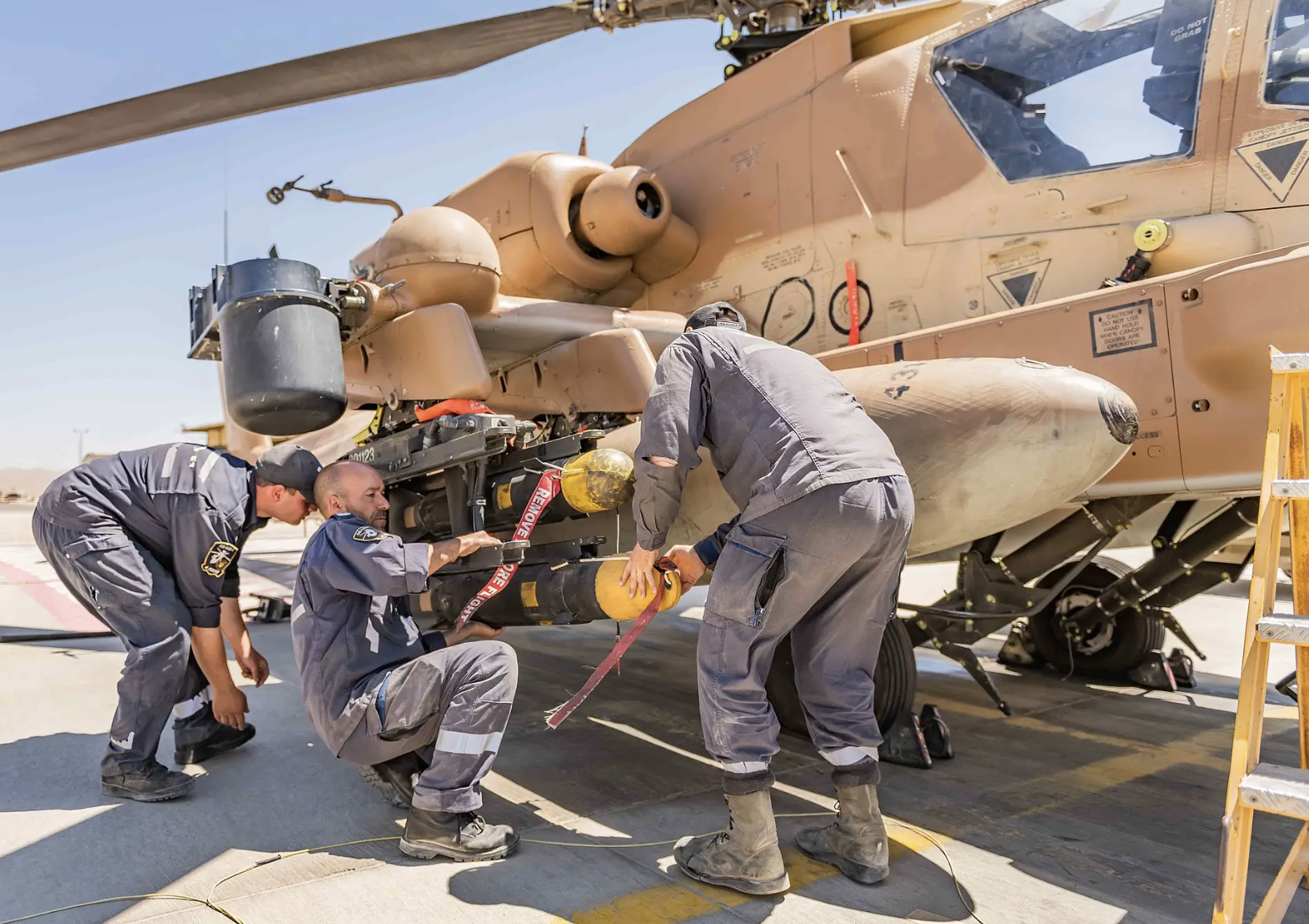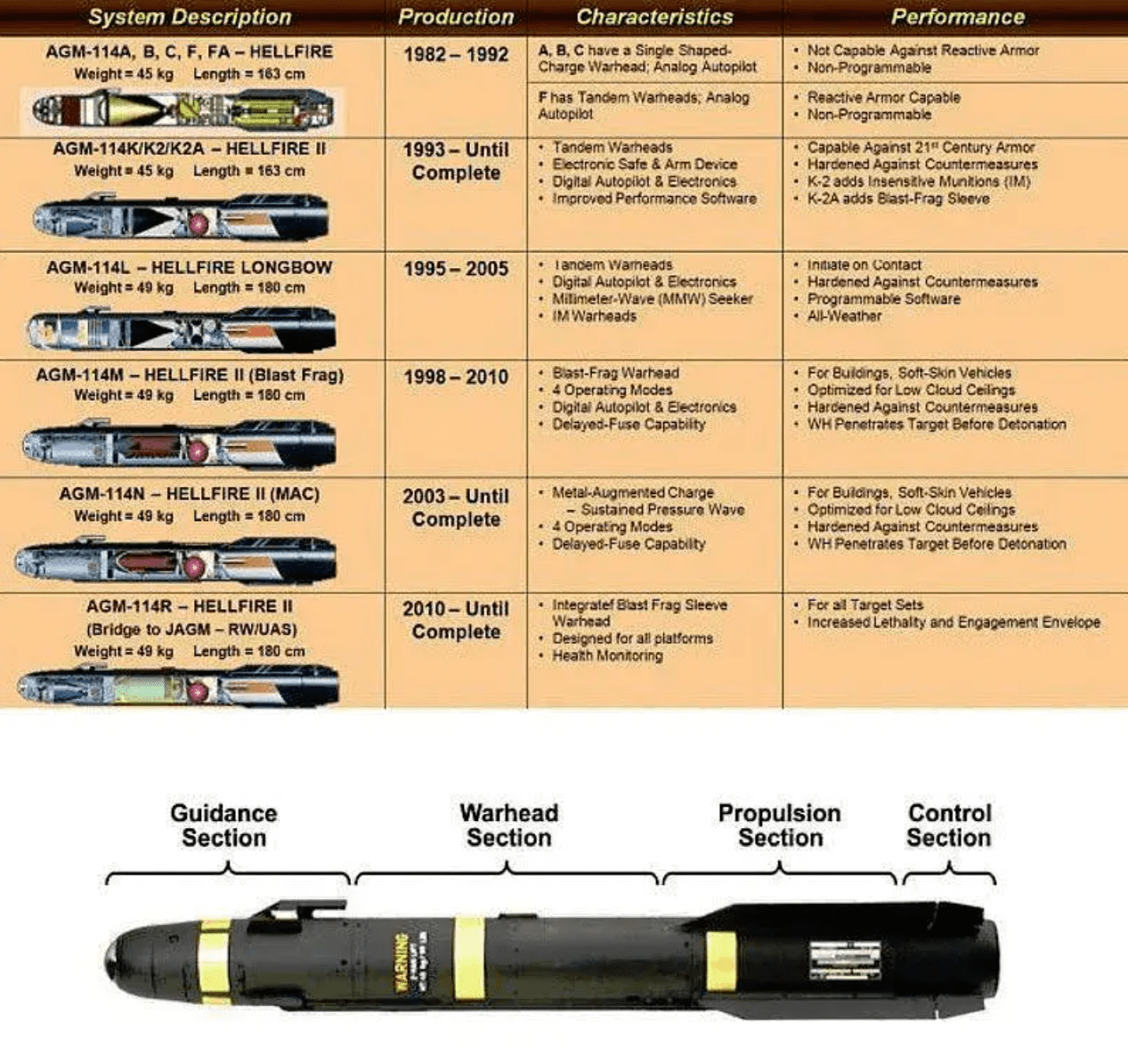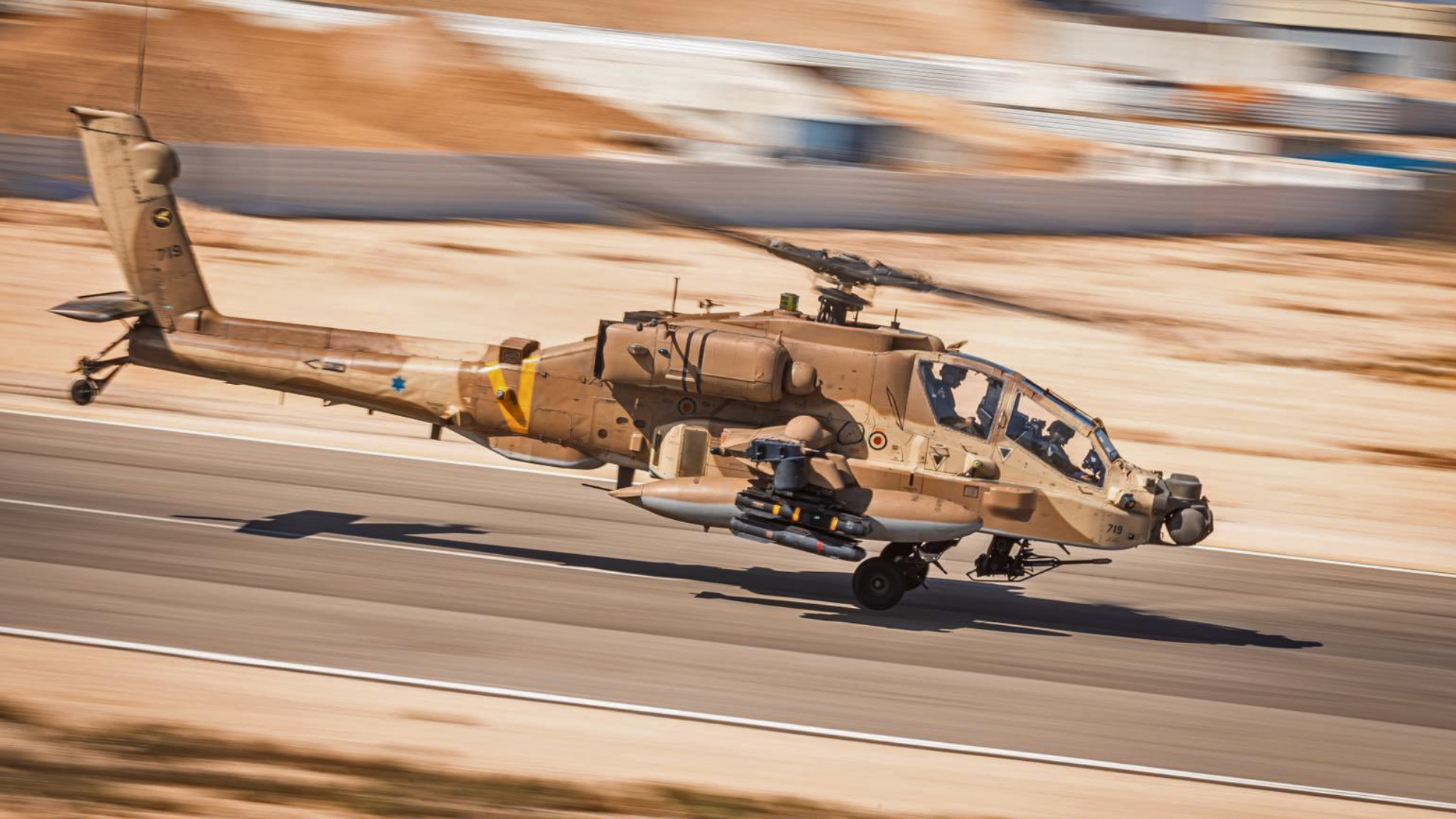With the current Gaza-Israel conflict now almost a month old, the Israel Defense Force (IDF) has generally been extremely discriminating about the kinds of photos and videos that it releases for public consumption during this campaign. This makes what appears to be a recent social media slip-up showing a mysterious version of the Hellfire air-to-ground missile with a prominent red stripe painted around the middle of its body all the more intriguing.
Yesterday, on its official X (formerly Twitter) account, the Israeli Air Force posted a photo of one of its AH-64D Apache attack helicopters — a type known locally as Saraf, meaning serpent in Hebrew — performing a rolling takeoff, presumably headed out on a sortie over Gaza, although that cannot be determined for sure.
While AH-64s have been a regular feature in IDF imagery of the current conflict, this photo included a striking difference. One of the Hellfire missiles carried in a four-round cluster on the outer station of the right-hand stub wing was marked with a red-colored band. This is in obvious contrast to the more usual (three) yellow bands seen on live Hellfire missiles, including the others loaded onto this helicopter. The missile overall is also a distinctly different color, looking closer to gray than Olive Drab.
The yellow bands seen on Hellfire missiles and other air-launched U.S.-standard munitions indicate that they contain high explosives. Essentially, they signify a live weapon with a warhead fitted. A red band, however, is altogether more mysterious and rarely — if ever — seen on a Hellfire.

As internet chatter about the possible meaning behind the red-banded Hellfire spiked, the Israeli Air Force quietly deleted the post in question, replacing it with a similar photo, this time showing a different AH-64D taking off with standard-looking Hellfires fitted. The lower missile this time features yellow stripes, albeit two, rather than the more usual three.
The caption remained the same, but — not surprisingly — provided little in the way of details:
“We continue to act and attack in the Strip, shoulder to shoulder with the fighters in the field.”
Based on U.S.-standard munitions markings, a red band can indicate an incendiary warhead, while dark red on a gray panel “indicates the ammunition contains an irritant (riot control) agent.” With a riot-control Hellfire version highly unlikely, there is a good chance that the missile might be an incendiary type.
In particular, the AGM-114N is a version of the Hellfire with a thermobaric warhead.
The N-version, also known as the Metal Augmented Charge (MAC) Hellfire, is specifically intended for destroying enclosed targets, of the kind that the IDF is repeatedly hitting in Gaza. Compared to a blast/fragmentation warhead, a thermobaric one is able to destroy the entire first floor of a building, for example, but leave the stories above it (relatively) undamaged.
A thermobaric missile is also better suited to hitting enemy forces hidden in caves, bunkers, or tunnel networks, of the kind that proliferate in Gaza.
A thermobaric warhead works, essentially, by using oxygen from the surrounding air to generate a high-temperature explosion and a much more powerful blast wave over a longer duration than a conventional condensed explosive.
As well as the primary effect of the sustained, high-pressure blast wave which creates a vacuum — then precipitates a reverse wave — thermobaric warheads also produce devastation by generating very high temperatures.
As Jim Gribschaw, program director for Air-to-Ground Missile Systems at Lockheed Martin Missiles and Fire Control explained: “Early versions of the MAC-configured Hellfire have already been combat-proven in Operation Iraqi Freedom and have been cited by the Administration as meeting an urgent requirement to suppress terrorists in urban areas. This missile is capable of reaching around corners to strike enemy forces hiding in cases, bunkers, and hardened multi-room complexes. Coupled with Hellfire’s highly accurate semi-active laser seeker, the MAC warhead gives our forces the ability to take out threat targets in urban environments with high lethality and minimal collateral damage.”

For the IDF, a thermobaric warhead would appear to offer great utility against tunnels in the context of Gaza, especially, with the potential for the highly accurate Apache/Hellfire combo equipped with this warhead to be fired directly into a tunnel entry point, killing anyone inside over a long distance of the tunnel’s length.
Meanwhile, the AGM-114M is another type of Hellfire that some have suggested might be the one seen in the originally posted photo, although it is normally described by the U.S. military as a blast/fragmentation type, rather than a combined blast/fragmentation/incendiary one.
The AGM-114M is based on the AGM-114K anti-armor missile that carries a tandem warhead to defeat armored targets. In the M-version, this warhead is replaced by a single blast/fragmentation-type warhead. While the AGM-114K is optimized for destroying targets like tanks and other armored fighting vehicles, the AGM-114M is better able to defeat ‘softer’ targets, such as light armored vehicles, light bunkers, small boats, and similar. This, too, is a weapon that would clearly find applications with the Israeli Air Force in Gaza.
There remains a question over whether the red band signifies either the AGM-114N or (less likely) the AGM-114M. There is also evidence that the AGM-114N, at least, doesn’t necessarily carry a red band (for incendiary), at least in U.S. military service.
There is also the possibility that the marking in question may be entirely specific to the IDF. That might suggest a more novel version of the Hellfire and more reason for the original tweet to have been deleted in the first place. Indeed, both the red-banded missile and the Hellfire with two yellow bands (carried in the same position) in the second photo could conceivably be (different) Israeli-modified AGM-114s.
We know, for instance, that the Israeli Air Force makes use of air-launched munitions for ‘roof knocking,’ in which typically non-explosive or low-yield devices are dropped on the roofs of targeted civilian homes and highrises in the Palestinian territories. This gives prior warning of an imminent airstrike, allowing inhabitants time to flee the attack. Little is known about the kinds of weapons used for these types of missions, although an unarmed or low-yield Hellfire version would make a lot of sense, especially in regard to the high level of precision required. It is noteworthy that there have also been recent public reports suggesting a degree of U.S. pressure on Israel to make more use of smaller and less destructive munitions, to reduce collateral damage.
The U.S. military has also, in the past, confirmed that it’s used Hellfires for ‘roof knocking.’
Back in April 2016, during the height of anti-ISIS operations, U.S. Air Force Maj. Gen. Peter E. Gersten, then deputy commander for operations and intelligence of Operation Inherent Resolve explained that the tactic aimed to “mitigate the loss of civilian life and minimize collateral damage.”
Gersten explained one mission, an airstrike on an ISIS financier’s home in Mosul, in which a woman and children were regularly present. The selected solution was, in Gersten’s words: “to put a Hellfire on top of the building and air-burst it so it wouldn’t destroy the building, simply knock on the roof to ensure that she and the children were out of the building. And then we proceeded with our operations.”
There are also other low-collateral damage variants of the Hellfire that we know to be in U.S. service, not least weapons like the AGM-114R9H and the AGM-114R9X “sword missile,” the development of which is at least indicative of the range of modifications that can be done with the basic Hellfire as a starting point.
With Israel’s long history of adapting U.S.-made and other weapons to its very particular needs, the idea of a specialized version of the Hellfire for the Israeli Air Force — or even a range of different local modifications — shouldn’t be ruled out. The missile could also be a familiar one, but marked with color codes that make sense to the IDF, but which are not the same as those used by the U.S. military.
Hopefully, and despite the secrecy surrounding IDF operations in general, we might still learn more about what is, for now, something of a mystery missile.
Contact the author: thomas@thedrive.com
